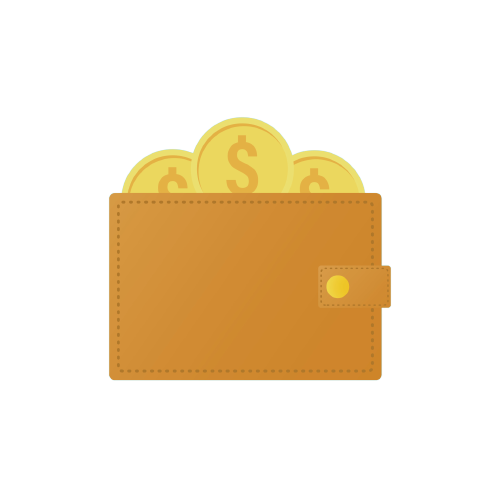
Bitcoin wallet recovery tools are software applications or services designed to help individuals regain access to their Bitcoin wallets in case they lose or forget their wallet credentials, such as passwords or recovery phrases. These tools are especially useful in situations where users have misplaced their wallet information and are unable to access their Bitcoin holdings. Below are some recovery tools that you can use to keep your wallet safe.
A.Seed Phrase Recovery Tools
Security is crucial in any Bitcoin wallet, and the seed phrase stands as one of the most crucial aspects of wallet protection. A seed phrase, also known as a recovery phrase or mnemonic phrase, is a sequence of words generated during the setup of a cryptocurrency wallet. This sequence of words serves as a master key to your wallet and allows you to regain access in case of loss or device failure. Seed phrase recovery tools play a pivotal role in helping users regain control of their wallets when they face the unfortunate situation of losing their original access credentials.
Importance of Seed Phrases
Seed phrases are essentially the foundation of wallet security. They enable users to reconstruct their wallets by generating the same set of public and private keys that were initially created. This means that even if your device is lost, stolen, or damaged, as long as you have your seed phrase, you can restore your wallet on a new device and access your funds.
The concept of seed phrases aligns with the principle of decentralization that cryptocurrencies are built upon. Unlike traditional banking systems, where a centralized authority can help you regain access to your account, cryptocurrency wallets are self-contained units of ownership. Seed phrases allow users to independently restore their ownership without relying on third parties, enhancing both security and privacy.
Seed Phrase Recovery Software
Seed phrase recovery software tools have emerged as lifesavers for individuals who find themselves locked out of their wallets. These tools are designed to assist users in reconstructing their wallets by deriving the private keys from the seed phrase. They employ cryptographic algorithms to generate the necessary keys accurately and securely.
When using seed phrase recovery software, it’s essential to choose reputable and well-reviewed options to ensure the safety of your funds. Popular wallet software, both online and offline, often includes built-in recovery features that make the process user-friendly and secure.
Seed Phrase Backup Methods
Given the critical nature of seed phrases, it’s crucial to ensure their safekeeping. Here are some effective methods for backing up your seed phrase:
Physical Copies: Write down your seed phrase on paper and store it in a secure location away from potential hazards like fire, water, and theft. Some users opt to store multiple copies in different secure locations.
Metal Backup: Create a metal backup by engraving or etching the seed phrase onto a durable and corrosion-resistant material, such as metal plates. This offers protection against physical damage and deterioration.
Cryptosteel or Similar Devices: Cryptosteel and similar devices are purpose-built for securely storing seed phrases. They are designed to withstand extreme conditions and provide long-term durability.
Password Managers: Some password management tools offer features to store seed phrases securely. However, this method might pose a higher risk if the password manager is compromised.
Digital Encryption: Encrypt your seed phrase and store it digitally in an encrypted file. Make sure to use strong encryption methods and keep the file offline on a secure device.

Seed phrase recovery tools serve as a safety net for cryptocurrency users. They allow individuals to regain control of their wallets and access their funds even in challenging circumstances. Remember that the security of your seed phrase is of utmost importance, and choosing appropriate backup methods can safeguard your assets and provide you with peace of mind in the world of digital finance.
B. Private Key Recovery Tools
Role of Private Keys in Wallet Access
Private keys are the cryptographic keys that provide ownership and access control over your cryptocurrency holdings. They are an essential component of cryptocurrency wallets, enabling users to sign transactions and prove ownership of their digital assets. Private keys are generated alongside public keys when creating a wallet, and they work together to facilitate secure and private transactions on the blockchain.
When a wallet is set up, the private key is kept secret and should never be shared with anyone. It’s what grants you access to your wallet and allows you to manage your funds. Losing your private key means losing access to your wallet, which can result in the permanent loss of your cryptocurrency holdings.
Tools for Recovering Private Keys
Private key recovery tools come into play when users lose access to their private keys due to various reasons, such as hardware failure, accidental deletion, or theft. These tools aim to help individuals recover their lost private keys and regain control over their wallets. Some common methods and tools for private key recovery include:
Wallet Software Recovery: Many wallet applications have built-in recovery options that allow users to restore their wallets using backup files or seed phrases. This is often the simplest and most secure method.
Data Recovery Software: If the private key was stored on a device that suffered data loss, data recovery software can sometimes help retrieve lost files. However, success depends on the condition of the storage medium and the effectiveness of the software.
Blockchain Analysis Tools: In some cases, blockchain explorers or analysis tools can help identify addresses associated with your private key. This is more suitable for advanced users and requires an understanding of blockchain mechanics.
Professional Services: There are companies and individuals specializing in private key recovery services. They often require detailed information about your situation and might employ advanced techniques to recover lost keys.
Security Considerations When Using Private Key Recovery Tools
While private key recovery tools can be incredibly valuable, their use should be approached with caution due to security risks. Here are some important security considerations to keep in mind:
Trustworthiness: Only use reputable and trusted recovery tools. Scammers often exploit desperate users who have lost access to their funds, so be cautious of unsolicited offers for recovery services.
Offline Environment: Whenever possible, perform recovery operations in an offline or air-gapped environment. This minimizes the risk of your private key being exposed to online threats.
Backup and Test: Before attempting any recovery, ensure you have a backup of the original situation. Test the recovery process using small amounts of cryptocurrency to verify that the method works and that your recovered wallet functions as expected.
Securing Recovered Wallet: Once you’ve successfully recovered your wallet, consider moving your recovered funds to a new, secure wallet. This prevents any residual vulnerabilities from compromising your assets.
Limit Exposure: Avoid sharing unnecessary details about your recovery process. Keep information about your wallet and private key recovery confidential to minimize the risk of targeted attacks.
C. Password Recovery Tools
Need for Password Recovery
Need for Password Recovery
In the realm of cryptocurrency, password protection is a key component of safeguarding your digital assets. However, situations may arise where users find themselves locked out of their wallets due to forgotten passwords. Password recovery tools come into play to address this common issue, providing a way for users to regain access to their wallets without compromising security.
Types of Password Recovery Tools
There are several types of password recovery tools available, each catering to different scenarios and preferences:
Brute Force Attack Tools: These tools systematically attempt every possible combination of characters until the correct password is found. While effective, they can be time-consuming and resource-intensive.
Dictionary Attack Tools: These tools use a predefined list of commonly used passwords and words to guess the password. They’re faster than brute force methods but rely on users’ tendencies to choose easily guessable passwords.
Password Guessing Tools: These tools take advantage of personal information, such as names, birthdates, and other easily obtainable details, to guess the password. They’re more effective if the user’s passwords are based on easily guessable patterns.
Rainbow Tables: These are precomputed tables containing hash values and their corresponding plaintext passwords. If a wallet stores passwords in a reversible manner (not recommended), rainbow tables can help crack passwords quickly.
Password Managers: Some password managers offer password recovery features that allow users to regain access to their accounts using alternative methods, such as account recovery codes or master passwords.
Security Precautions During Password Recovery
While password recovery tools can be beneficial, they should be used with caution to maintain the security of your cryptocurrency holdings:
Use Reputable Tools: Only use well-reviewed and trusted password recovery tools. Scammers may create fake recovery tools to steal your information.
Offline Recovery: Whenever possible, perform password recovery operations offline or in an air-gapped environment. This reduces the risk of exposing sensitive information to online threats.
Avoid Sharing Information: Be cautious about sharing personal information online or with recovery tools. Scammers might use the information you provide to target you through social engineering attacks.
Multi-Factor Authentication (MFA): If your wallet supports it, enable multi-factor authentication. This adds an extra layer of security and makes it significantly more difficult for unauthorized individuals to gain access.
Review Recovery Process: Before using a password recovery tool, carefully review the process to ensure it aligns with security best practices. If a tool requires you to compromise other security measures, it’s better to seek alternatives.
Change Password After Recovery: Once you’ve successfully recovered your password and gained access to your wallet, consider changing the password immediately to prevent any potential unauthorized access.
D. Multi-Signature Wallet Recovery Tools
Understanding Multi-Signature Wallets

Multi-signature wallets, often referred to as multi-sig wallets, are a sophisticated form of cryptocurrency wallet that adds an extra layer of security by requiring multiple private keys to authorize transactions. In a traditional single-signature wallet, a single private key is sufficient to control and sign transactions. In contrast, multi-signature wallets distribute control among multiple parties, enhancing security and mitigating the risk of a single point of failure.
For instance, a common setup might involve a 2-of-3 multi-signature wallet, where three private keys are generated, but any two of them are required to initiate transactions. This setup can involve individuals, organizations, or even hardware wallet devices as key holders, making it challenging for a single compromised key to compromise the entire wallet.
Tools for Recovering Multi-Signature Wallets
Recovering a multi-signature wallet can be more complex than recovering single-signature wallets due to the involvement of multiple keys and parties. Recovery tools are designed to assist users in regaining access to their multi-signature wallets when they’ve lost control of one or more private keys. Some recovery methods and tools include:
Co-Signing from Remaining Key Holders: If a key holder is available and responsive, the other key holders can collaborate to initiate the recovery process. Depending on the wallet’s setup, a certain number of key holders may need to approve the recovery operation.
Emergency Recovery Services: Some wallet providers offer emergency recovery services that help users regain access to their multi-signature wallets. These services often require thorough verification of identity and ownership.
Manual Reconstruction: In cases where some key holders are unavailable or unresponsive, manual reconstruction of the wallet might be necessary. This could involve creating a new multi-signature wallet and moving the funds to the new address.
Recovery Process for Multi-Signature Wallets
The recovery process for multi-signature wallets depends on the specific wallet software being used, the number of key holders, and the level of trust among them. Here’s a generalized overview of the recovery process:
Assessment: Determine the reason for recovery – whether it’s due to lost keys, unresponsive key holders, or other issues.
Identify Key Holders: Contact the remaining key holders and assess their willingness to participate in the recovery process.
Initiate Recovery: If all key holders are available and cooperative, initiate the recovery process according to the wallet’s procedure. This might involve creating and signing a recovery transaction.
Emergency Services: If some key holders are unavailable, consider using emergency recovery services offered by the wallet provider. This often requires thorough identity verification and adherence to their specific protocols.
Manual Reconstruction: If no viable recovery options are available, you might need to manually reconstruct the wallet by creating a new multi-signature wallet and transferring the funds from the inaccessible wallet to the new one.
Ensure Security: Throughout the recovery process, ensure that security measures are in place, such as performing operations in an offline or air-gapped environment, verifying the authenticity of recovery communications, and protecting sensitive information.
Conclusion